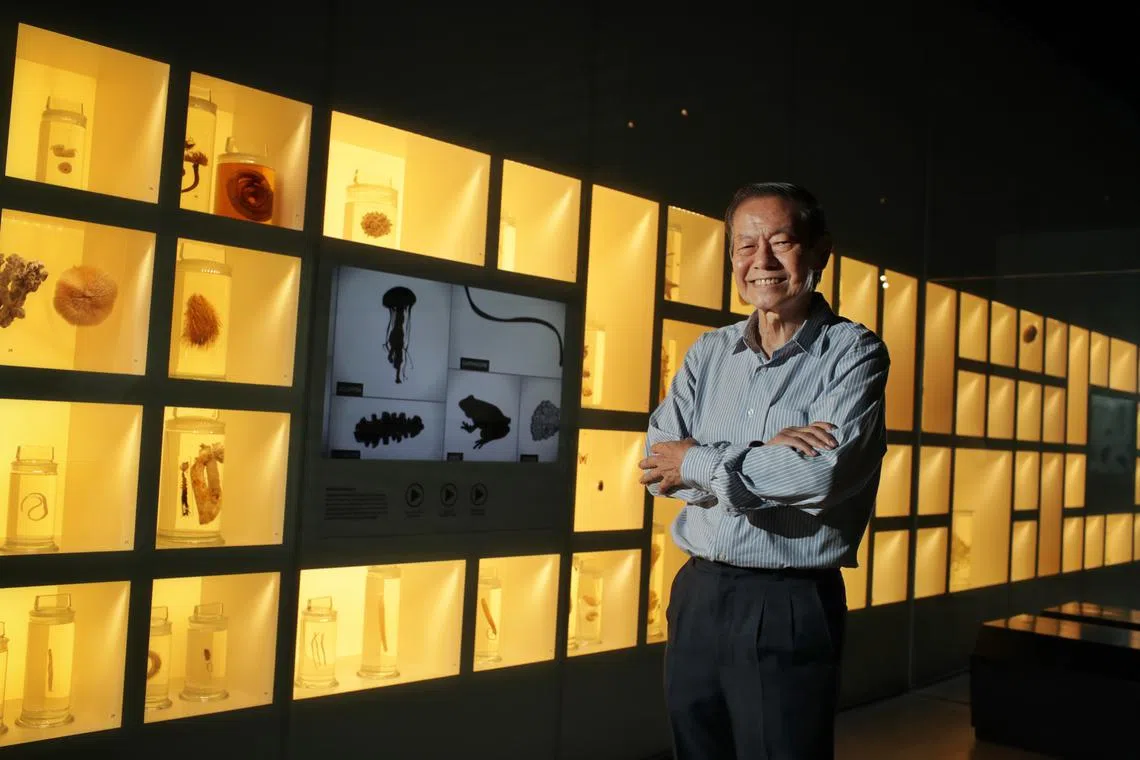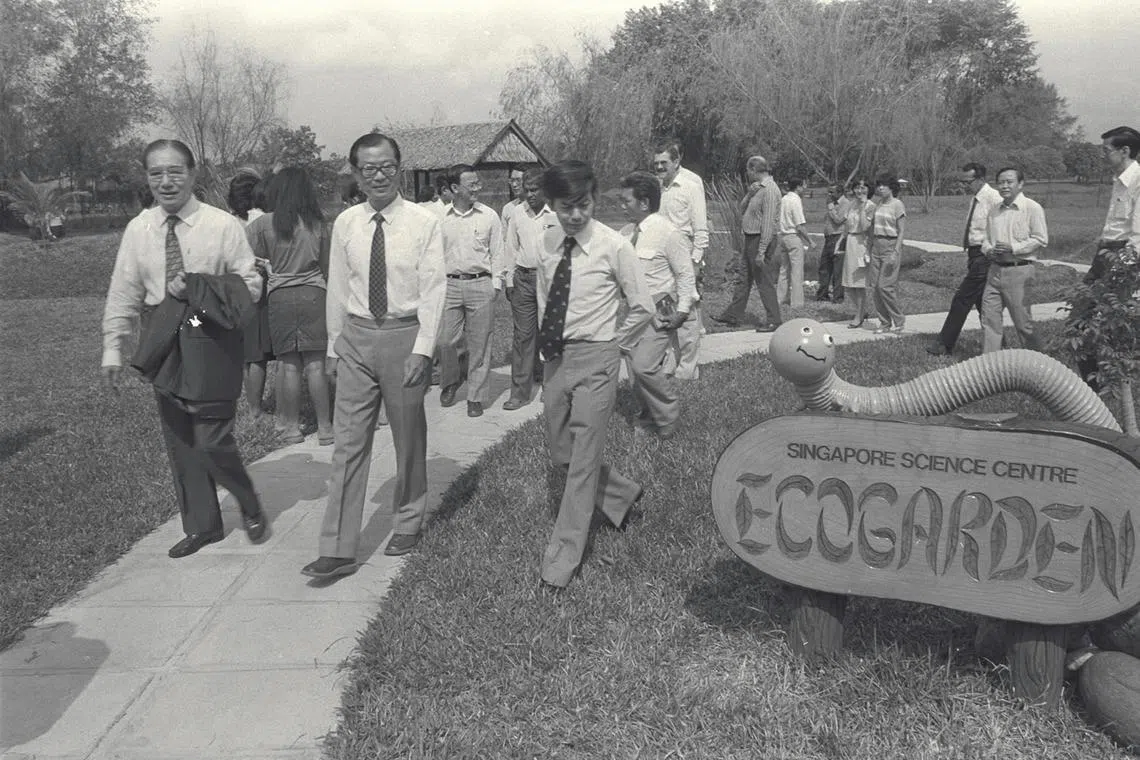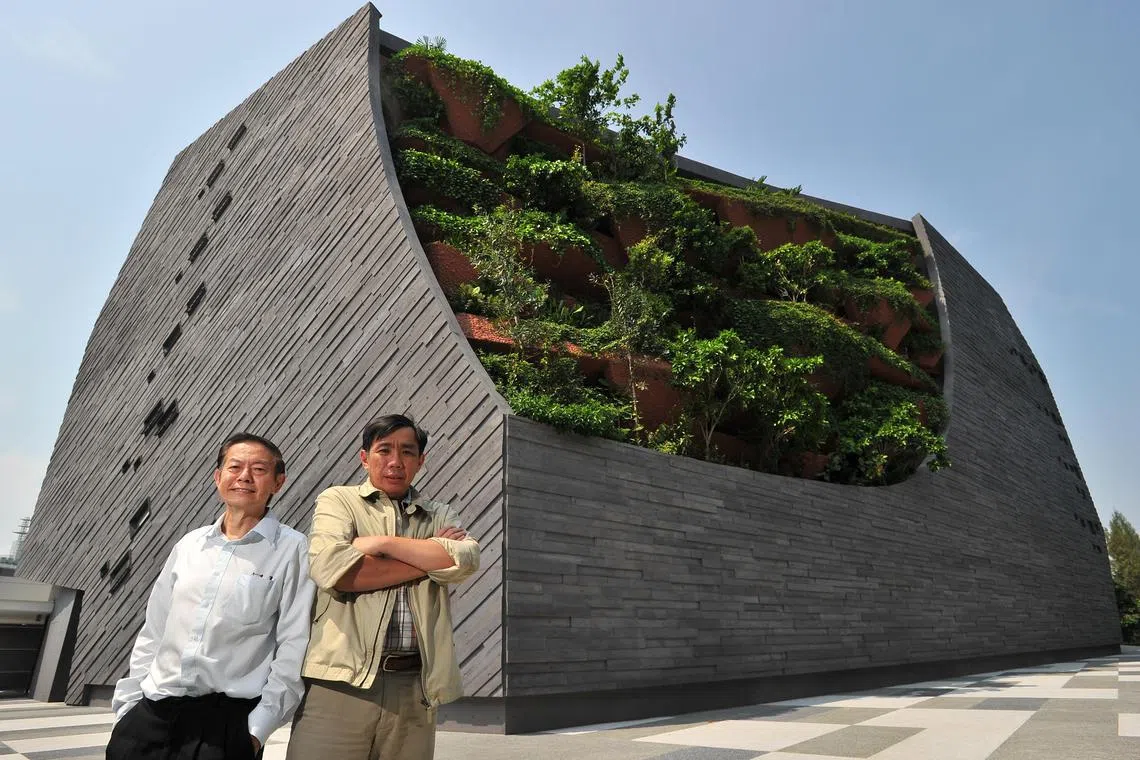Titan of Singapore science education retires after 50 years
Sign up now: Get ST's newsletters delivered to your inbox

Professor Leo Tan has served as the director of the Science Centre, was the founding dean of NIE and help to set up the Lee Kong Chian Natural History Museum.
ST PHOTO: GIN TAY
Follow topic:
SINGAPORE - For over half a century, Professor Leo Tan has been a champion of what were thought to be lost causes – and not without good reason, many might say.
After all, the efforts of Singapore’s first locally trained marine biologist led to the nation’s coastal habitats being protected, natural heritage saved, and science education overhauled.
“Most of the things I did have been unsexy,” said Prof Tan, 78, who retired in December as professorial fellow and director of special projects at the National University of Singapore’s (NUS) science faculty after 50 years in science and education.
“Sometimes, it is good to look for lost causes that nobody else wants to do. And you’d be surprised.”
For instance, he spent 40 years fighting for the preservation of Labrador Park, the mainland’s only rocky coast, which he had grown up exploring, until it was gazetted as a nature reserve in 2002.
Not only may the 300m-long stretch house new species yet to be discovered, but it also has historical value. “Future generations will be able to see how Singapore’s coastline may have looked like originally,” he said.
Prof Tan also rejuvenated the then Singapore Science Centre in the 1980s when he was appointed director after others turned down the position as an apparent career dead end.
And dissatisfied with how the Raffles Collection of plants and animal specimens – the country’s oldest natural history collection – had been hidden away for decades in a research museum in NUS, he returned them to the public eye through helping to set up the Lee Kong Chian Natural History Museum in the early 2010s.
He asserts that most of his roles were handed to him by chance rather than choice. “The only job I put my hand up for was to be a marine biologist,” he said.
Prof Tan, who earned his degrees at the University of Singapore, now NUS, started out teaching biology at the university in 1973 before he was seconded to the Science Centre in 1982.
In 1991, he was asked to be the founding dean of science at the National Institute of Education (NIE). He then led the school from 1994 to 2007.
In 2008, he returned to NUS and helped set up the Lee Kong Chian museum and the bachelor of environmental studies programme.
Among his many accolades, Prof Tan received the Public Administration Gold Medal in 1988 and the National Science and Technology Medal in 1999.
But of all the hats he has worn, his decade at the Science Centre turned out to be the most fulfilling and challenging, said Prof Tan.
“Seven people rejected the position before me. I thought this must be a lousy job. But the Science Centre took me out of my cocoon of university life.”

Then Minister for Environment Ong Pang Boon at the opening pf the Science Centre’s new Ecogarden with then Science Centre director Leo Tan (right) on March 15, 1983.
PHOTO: ST FILE
In the early 1980s, the Science Centre was considered outdated and dull. “It was seen as an outpost, way out in Jurong, next to a swamp. People would rather go to the Jurong golf course next door,” recalled Prof Tan.
In his first year on the job, he dreaded going to work. Repairs to the building were needed, and he did not have a budget for exhibitions. “I saw the cracks and I thought, ‘Am I going into a building that may cause an accident? Will I be hauled to court?’”
Eventually, he realised the roof and walls would hold up.
To raise $7 million a year for exhibitions, Prof Tan learnt the art of persuasion. Out of the 10 multinational companies and organisations he approached in his first two years, only one agreed to fund an exhibition.
By the late 1980s, however, the number had grown to six.
The centre got its big break in 1989 when it held Singapore’s first dinosaur exhibition, with real skeletons flown in. It was the first profitable ticketed event for the Science Centre, said Prof Tan.
Visitor attendance rose throughout his tenure, and in 1984, the Science Centre was named one of the world’s top 10 science museums.
Now called the Science Centre Singapore, it will move to a new location in the Jurong Lake District in 2027.
Prof Tan said: “I will always remember the Science Centre with gratitude. It was given to me as a gold bar wrapped in dirty brown paper.”

A Pink Mempat tree planted by Prof Leo Tan during his tenure at the Science Centre Singapore’s Eco-Garden.
PHOTO: SCIENCE CENTRE SINGAPORE
He is not the only one who is grateful.
Dr Anne Dhanaraj, senior director of education at the Science Centre Board, said: “Prof Leo Tan was my lecturer in NUS and later became my boss at Science Centre Singapore. He is one of the most approachable people I know and made the effort to remember all his staff, right down to the cleaners, by name.”
Post-retirement, Prof Tan’s focus will be his five grandchildren – three girls and two boys, aged between four and 10. He is keen to spend time with them the way he could not as a father working seven days a week when his sons, Lionel and Lester, were growing up.
He will also spend more time with his wife, ophthalmologist Wong Chor Chon, 77, who now practises part-time.
He plans to take his grandchildren outdoors, including to the zoo and bird park, and teach them fun facts while they play – the best form of learning, said Prof Tan, who was educated at St Joseph’s Institution.
“When I grew up, learning wasn’t fun. If I smiled in class, I got punished,” he recalled.
Prof Tan had two key aims when he moved to the newly formed NIE in 1991 – challenge traditional pedagogies that encouraged rote learning and instil a sense of pride and professionalism in teachers. He wanted them to be innovative in classrooms.
On top of teaching the biology curriculum to teachers-in-training, he and a colleague had them start an aeroponics farm on campus, in the hope that they would be inspired to find engaging ways to teach. And to encourage NIE students to dress more professionally instead of wearing slippers, shorts and even pyjamas to campus, he had a trainee teachers club hold fashion shows and talks on corporate dressing.
Calling Prof Tan a “people’s director”, current NIE director Christine Goh said: “Under Prof Tan’s leadership, NIE’s global outreach expanded tremendously. Many local and international partnerships were built with reputable education institutes and commercial organisations.”
Those who know Prof Tan well are confident that he will not completely hang up his hat.
NUS professor Peter Ng, who was Prof Tan’s student in university and set up the Lee Kong Chian museum with him, said: “For Leo, retirement is just that he is stepping down from a formal appointment. He is a man who needs to keep busy. I will be worried if he retires in the traditional sense of the word.”

Professor Leo Tan (left) set up the Lee Kong Chian Natural History Museum with Professor Peter Ng (right). The museum opened in April 2015.
PHOTO: ST FILE
Prof Tan will continue to serve as the museum’s adviser and as chairman of the National Parks Board’s Garden City Fund, as he wants to help achieve Singapore’s aim of planting a million more trees by 2030.
While he continues to sit on the boards of other organisations, the scientist is also a Justice of the Peace and licensed solemniser who has helped about 150 couples tie the knot since 2014. Several of them were previously students of NUS and NIE.
Prof Tan said: “I always tell people this: As long as you think I’m useful, I’m available.”


